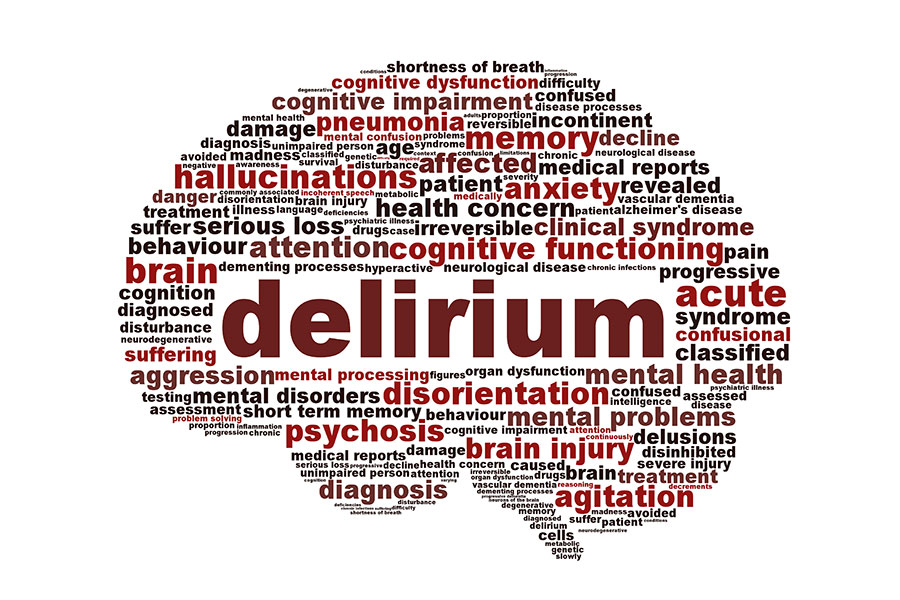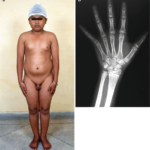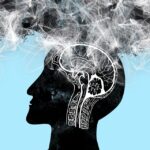Delirium is a rapid-onset neuropsychiatric syndrome characterized by disturbances in attention, awareness, and cognition. It is prevalent among hospitalized patients, particularly the elderly, and is associated with increased morbidity and mortality. Prompt recognition and management are crucial to improve patient outcomes.

Clinical Presentation
Delirium manifests with a sudden change in mental status, typically developing over hours to days. Symptoms fluctuate throughout the day and may include:
- Reduced Awareness: Difficulty focusing, sustaining, or shifting attention; being easily distracted.
- Cognitive Impairment: Disorganized thinking, impaired memory, disorientation to time and place, and language disturbances.
- Perceptual Disturbances: Hallucinations or delusions.
- Altered Sleep-Wake Cycle: Daytime drowsiness and nighttime agitation.
- Emotional Disturbances: Anxiety, fear, depression, irritability, or euphoria.
Subtypes of Delirium
Delirium is classified into three subtypes based on psychomotor activity:
- Hyperactive Delirium: Marked by agitation, restlessness, and hypervigilance.
- Hypoactive Delirium: Characterized by lethargy, reduced motor activity, and drowsiness; often underdiagnosed due to its subtle presentation.
- Mixed Delirium: Alternating features of hyperactive and hypoactive subtypes.
Etiology and Risk Factors
Delirium is multifactorial, with various predisposing and precipitating factors:
- Medical Conditions: Infections (e.g., urinary tract infections, pneumonia), metabolic imbalances, organ failure.
- Medications: Polypharmacy, especially with sedatives, opioids, and anticholinergics.
- Substance Use: Intoxication or withdrawal from alcohol or drugs.
- Environmental Factors: Hospitalization, especially in intensive care units, sensory deprivation or overload.
- Baseline Vulnerabilities: Advanced age, pre-existing cognitive impairment, severe illness.
Pathophysiology
The exact mechanisms underlying delirium are not fully understood. Proposed theories include:
- Neurotransmitter Imbalance: Disruption in acetylcholine and dopamine levels affecting cognitive function.
- Inflammation: Systemic inflammation leading to neuroinflammation and neuronal dysfunction.
- Oxidative Stress: Cellular damage due to free radicals impacting brain function.
- Sleep-Wake Cycle Disruption: Altered melatonin secretion affecting circadian rhythms.
Diagnosis
Diagnosis is clinical, based on history and examination. Tools such as the Confusion Assessment Method (CAM) and the 4 ‘A’s Test (4AT) aid in detection. Key diagnostic criteria include:
- Acute onset and fluctuating course.
- Inattention.
- Disorganized thinking or altered level of consciousness.
Management
Effective management involves:
- Identifying and Treating Underlying Causes: Addressing infections, correcting metabolic imbalances, reviewing medications.
- Supportive Care: Ensuring adequate hydration, nutrition, and pain management.
- Environmental Modifications: Providing orientation cues, minimizing noise, ensuring adequate lighting.
- Pharmacological Interventions: Reserved for severe agitation; antipsychotics may be used cautiously.
Prevention
Preventive strategies focus on mitigating risk factors:
- Regular cognitive engagement.
- Early mobilization.
- Sleep hygiene promotion.
- Sensory aids for those with visual or hearing impairments.
- Medication review to minimize polypharmacy.
Prognosis
While delirium is often reversible, it can lead to prolonged cognitive impairment and increased risk of dementia. Early detection and management are vital to improve outcomes.

